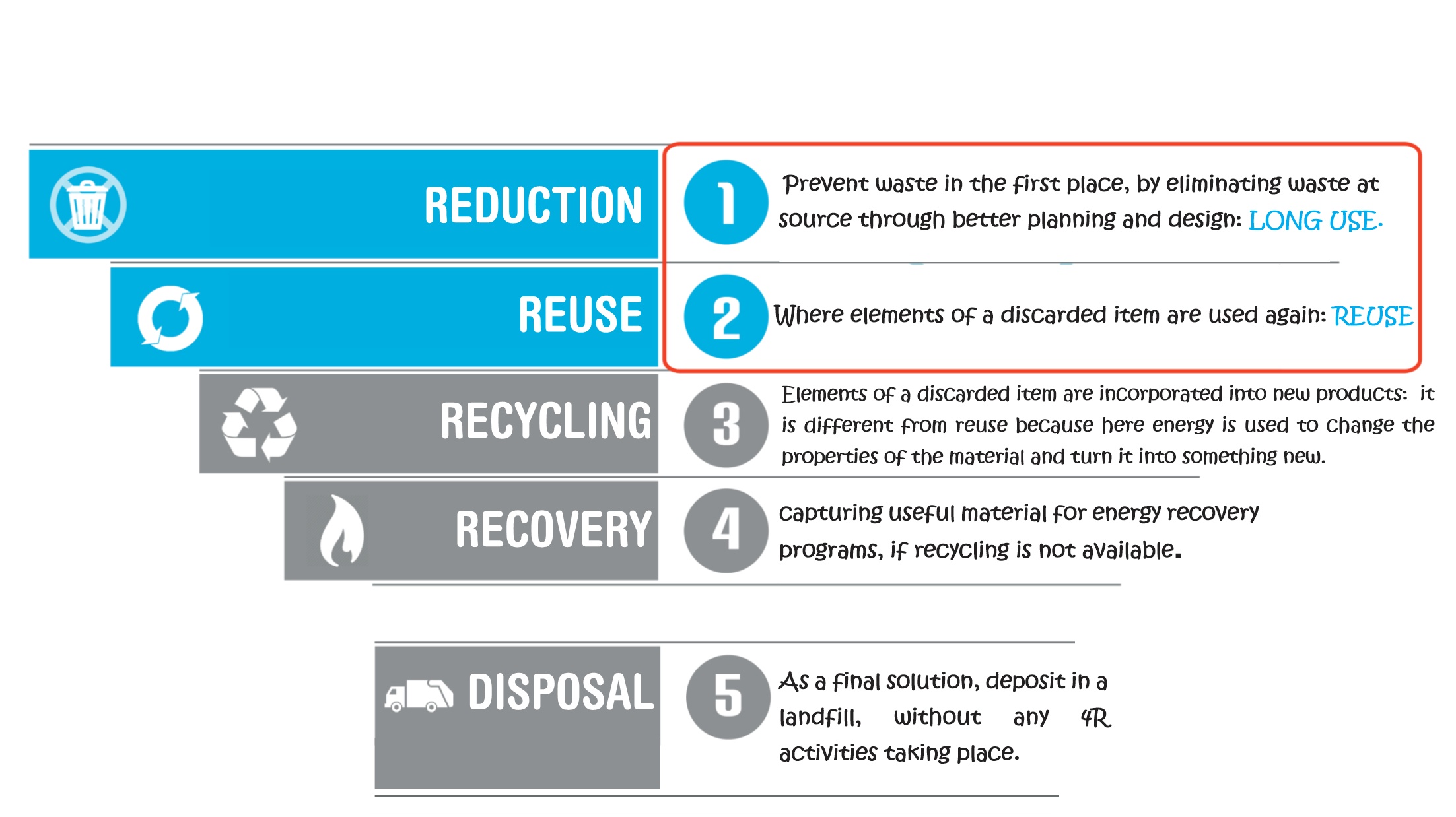Waste Management
DocumentsThe four different “R’s” of waste hierarchy
The EU Commission has issued directives related to waste and its management in which it also defines a ‘waste hierarchy’ (Directive 2008/98/EC – Waste Framework Directive). This hierarchy implies a classification of the different available waste management options including: reduction, reuse, recycling and recovery. Through this waste hierarchy we can better distinguish between waste and by-products, extract the maximum benefits from products and generate the minimum amount of waste to be disposed.
REDUCTION: incorporating common sense ideas, such as: to buy less and use less.
REUSE: where elements of a discarded item are used again.
RECYCLING: when elements of a discarded item are separated into materials that may be incorporated into new products. This is different from reuse because here energy is used to change the properties of the material and turn it into something new.
RECOVERY: capturing useful material for energy recovery programs.
The PURE project thus graphically interpreted this hierarchy

The 4 R’s of reduce, reuse, recycle and recover have been considered to be a base of environmental awareness and a way of promoting conscious behavior and sustainable choices.
The concept of reuse is often compared to and confused with recycling.
Reusing an item often means using an item to serve a purpose beyond its intended function. This term can also relate to items that are utilized by one consumer and then remarketed to other consumers. Some items can be collected and refashioned to serve practically any purpose. Reusing has allowed consumers to express their creativity in many areas including interior design, art, fashion, and many other areas.

